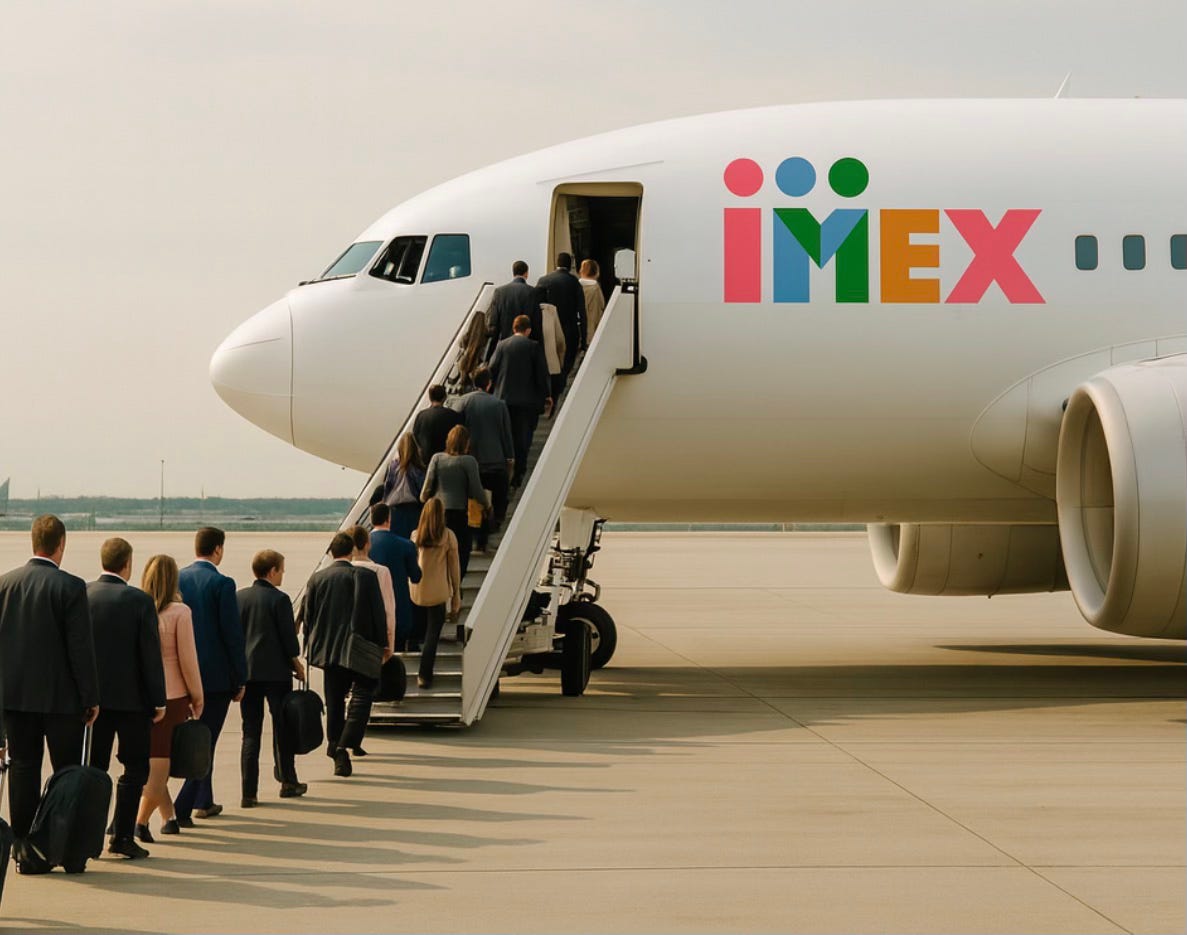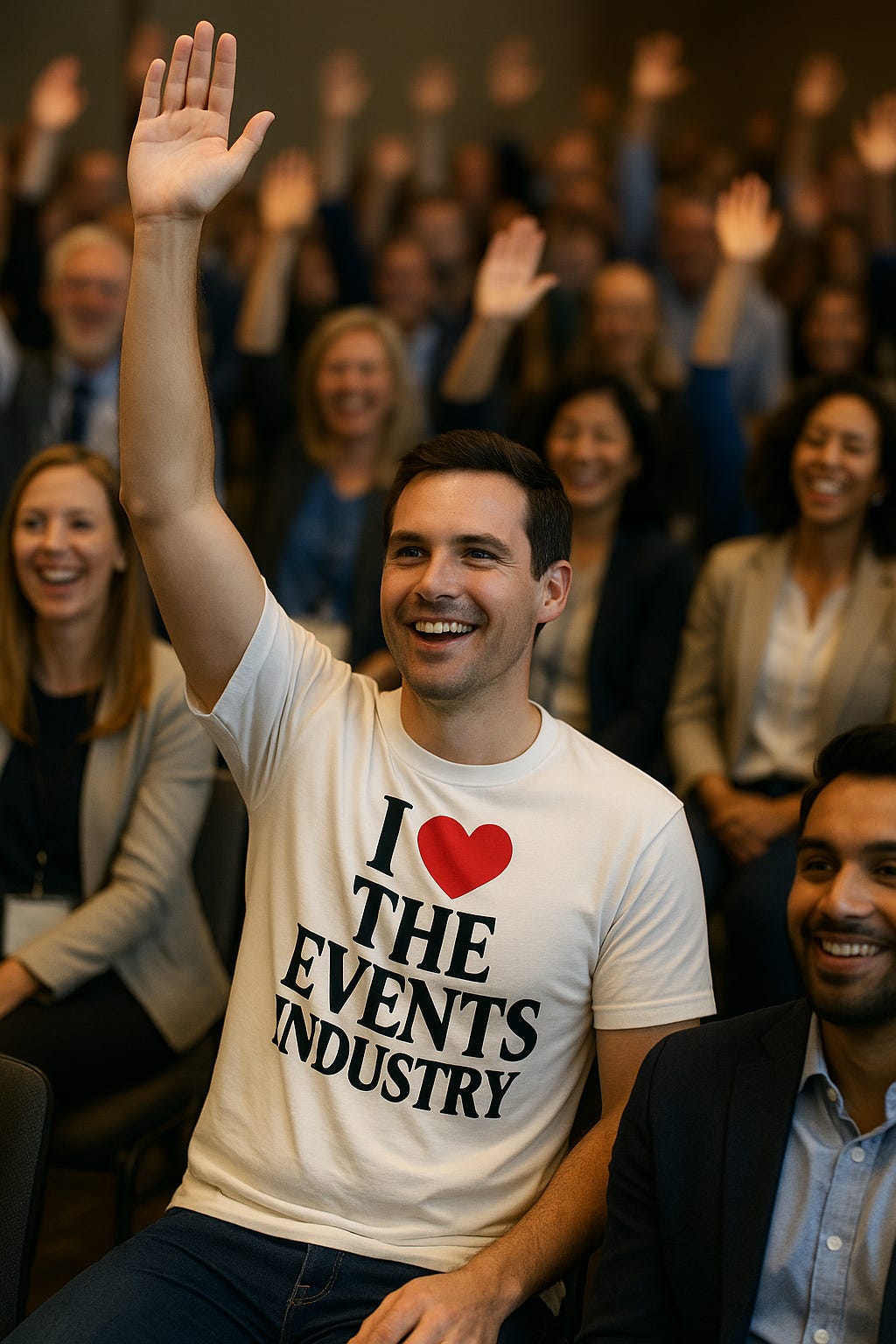Why Thousands of Event, Hospitality, and Tourism Pros Still Love one of the World’s Most Stressful Jobs
They’re heading to Las Vegas for IMEX, chasing the rush they create for others—the chemistry of awe, risk, and belonging that makes the work worth it.

Thousands of event, hospitality, and tourism pros are heading to Las Vegas for IMEX, chasing the rush they create for others—the chemistry of awe, risk, and belonging that makes the world’s hardest job worth it.
IMEX is not just another convention. It’s the annual gathering of an ecosystem that quietly shapes global connection: event producers and experience designers, destination marketers, tourism boards, incentive-travel innovators, hotel executives, marketers, and the fast-rising world of event and hospitality tech. For one week each fall, Mandalay Bay becomes their shared laboratory—where ideas are bartered like currency, where countries perform as brands, and where the air hums with the optimism of people who still believe that face-to-face is the world’s most powerful medium.
Deals are struck over cappuccinos in the Hosted Buyer Lounge. Destinations reinvent themselves as theatre. Tech founders promise to automate the un-automatable: human emotion. Between receptions and sessions, you can feel the charge—the undercurrent of purpose that pulls every exhausted traveler back each year.
And every time I speak to a room like this, I start with the simplest gesture. No slides. No screens. Just a question.
“How many of you love your job?”
Almost every hand goes up. Then I say, “Look around.”
That’s the whole demonstration. The oldest technology in the world. A surge of mirror neurons and oxytocin—a visible reminder that connection itself is the product. For a moment, the noise of an industry built on logistics gives way to what it really trades in: belonging.
We’re not in the event business. We’re in the goosebumps business.
As Scott Galloway likes to say, “When an event goes well, nobody notices. When it goes badly, it’s a public failure.” Every producer knows that terror—the dead mic, the blackout, the long second before applause. Yet the same people who risk public failure again and again will swear, hand over heart, that they love this work.
Psychology explains part of it. Edward Deci and Richard Ryan’s Self-Determination Theory says true motivation depends on three needs: autonomy, competence, and relatedness. Event professionals live at that intersection. They choose this chaos, master it, and do it together. That combination ignites the brain’s reward system—dopamine for achievement, norepinephrine for focus, oxytocin for trust. Stress becomes euphoria; exhaustion feels like proof of purpose.
Anthropology explains another layer. Humans have always built temporary worlds—festivals, fairs, ceremonies—to remember who they are. Every modern conference is a descendant of the bonfire, every gala a polished ritual of renewal. We repeat the pattern because it reaffirms identity. Habit, in this industry, isn’t monotony; it’s meaning rehearsed.
Sociology adds its lens. Émile Durkheim called it collective effervescence—the emotional electricity that arises when people move, sing, or gasp together. That charge is what event pros manufacture for others. At IMEX, they finally get to stand inside it. The hugs in the hallways, the accidental reunions at registration, the familiar exhaustion that somehow feels holy—that’s the tribe remembering itself.
And then there’s the neuroscience of the rush. Mihaly Csikszentmihalyi named it flow, the state where skill and challenge balance so perfectly that time disappears. Every event lives inside that equation: the headset crackle, the countdown, the moment the lights drop. In that tunnel, the prefrontal cortex quiets, self-doubt dissolves, and the body floods with dopamine and endorphins. Chaos becomes choreography.
Even goosebumps have a name in science: frisson. When sound, light, and anticipation align, tiny muscles contract around hair follicles and the brain releases dopamine, oxytocin, and endorphins—the same chemicals behind music, love, and prayer. The audience feels it first, but mirror neurons ensure we feel it too. Their awe becomes ours. That’s why fatigue can feel transcendent. We’ve shared a biochemical proof that something real happened.
To outsiders, IMEX is booths and business cards. To insiders, it’s ritual. The repetition—the same city, the same schedule, the same exhaustion—binds the tribe. Each year is both déjà vu and renewal. We rebuild the world for a living and find joy in the rebuilding.
Ask anyone in this profession why they stay and they won’t mention ROI or headcount. They’ll talk about moments: the hush before doors open, the first music cue that lands perfectly, the roar that confirms the risk was worth it. Those seconds are the purest form of recognition—a reminder that, for all the data and decks, what we create is still human chemistry.
So as thousands of event, hospitality, and tourism pros roll their carry-ons through Harry Reid International Airport this week, remember what they’re chasing. Not panels. Not swag. The feeling. The anticipation, the awe, the fleeting sense of collective heartbeat.
Because the oldest technology in the world still works—people, raising their hands, looking around, and realizing they belong.
That’s the business we’re in. The goosebumps business.
And it’s still the best job in the world.




This sentiments are so very accurate, David. I love it and have loved it for many many years.